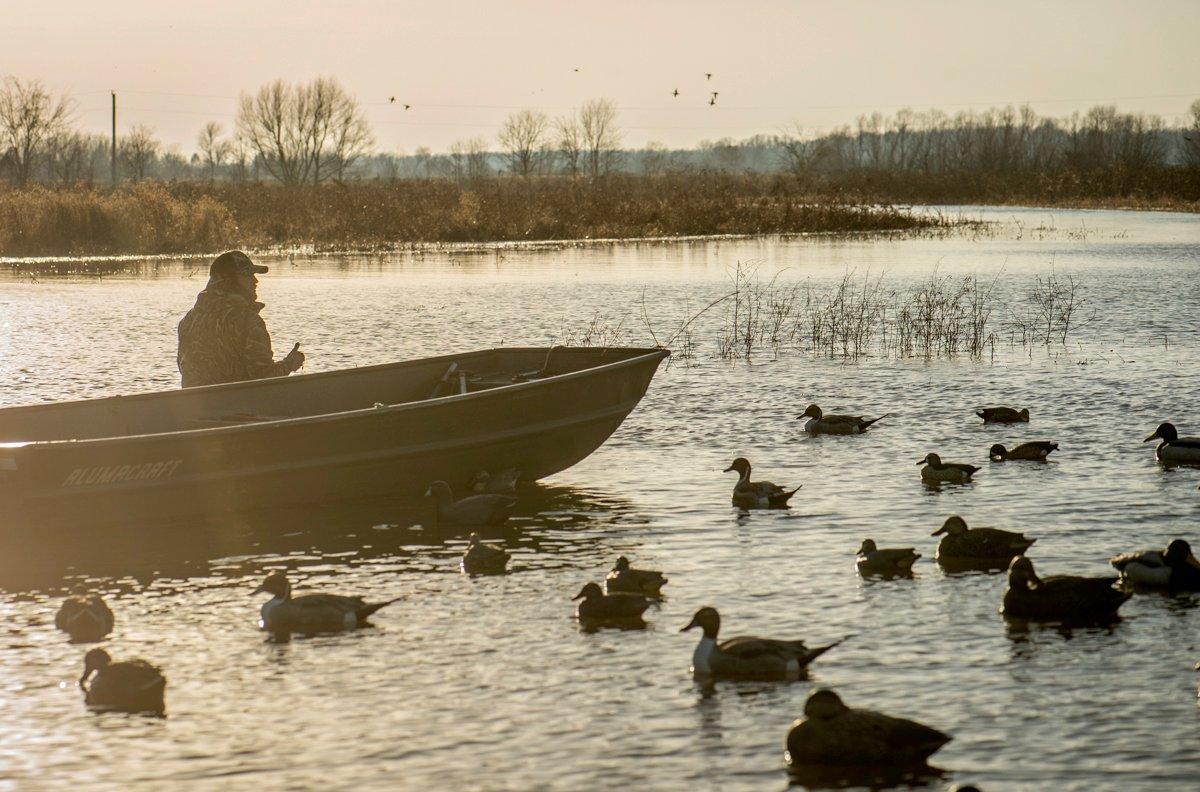Tailor your rigs for maximum efficiency in specific situations
Most duck hunters have strong opinions on what they consider to be the best decoys. If you're honest, you might simply choose the blocks you used to shoot your latest limit.
But the choices go deeper than that, of course. Modern manufacturers have given us an array of fakes, including life-sized, oversized, ultra-light or incredibly durable models. All of them work, and as a whole, they're more realistic-looking than ever. Still, some models and styles perform better in specific situations, and it's wise to tailor rigs for those scenarios before heading afield and learning that you're ill-equipped.
Here's a brief rundown of how I've set up my decoy rigs for various niches. These approaches might not be perfect, but I've refined them through more than 30 years of trial and error — lots of error, in some cases.
Puddle Ducks, Small Water
I hunt several creeks and small potholes early in the season. You don't need many decoys for these setups, so I usually go with a mix of six to eight mallards and wood ducks. Don't ask me why I use wood duck decoys. Woodies go where they want. If you're set up there, you'll kill a bunch. If you're not, you'll curse them. Still, I guess wood duck fakes add realism to a spread.
If I'm seeking more attraction, I might sprinkle in a handful of teal decoys. They're light and don't take up much room in the bag.
Puddle Ducks, Medium-Sized Water
For large marshes or small lakes, I want a spread that will get the attention of birds from a distance, so I carry as many decoys as I can safely tote in my watercraft. If I use a skiff, that might limit me to one large bag of blocks. If I'm in a buddy's boat, we can double that.
Usually, my medium puddler spread consists of at least two-dozen mallards with a few wood ducks and perhaps some teal. More important, I use light plastic decoys — even some water-keeled models — to reduce the weight. That's critical if you're attempting to push yourself, your gear, a sack of decoys and a wet Labrador through a bog.
Puddle Ducks, Big Water
My buddies and I usually use a motorboat — my Lund or someone else's jon boat/mud-motor rig — on big water, so we can carry quite a few decoys, and weight isn't a consideration. If the water will likely be choppy, I'll leave my light plastic decoys at home and go with oversized Styrofoam or foam-filled plastic models. These handle waves much better than light fakes, and they'll ride the rollers realistically instead of bobbing up and down like a monkey on a pogo stick.
In these situations, I also like to use some super-magnum models to boost visibility. They're often too heavy and unnecessary in small-water settings, but they pay dividends on big stuff.
Puddle Ducks, Fields
Usually, I just throw out as many full-body goose decoys as my truck can carry. If I want aesthetics, I'll augment those with two bags of full-body mallards, but I don't need them.
Walk-In Prairie Hunts
Weight is the big consideration here. Typically, I'll go with a dozen or more of the lightest decoys I have. When I started hunting the Dakotas, that meant 15 or so of the old hollow-bodied Herter's Suc Ducks. However, those have a tendency to flip over in a stiff wind, so I've mostly changed over to super-light modern plastic fakes. Again, if I want more blocks, I'll likely use some teal to boost my numbers.
If I'm after divers and need lots of decoys, I go with at least two-dozen light blocks. I still use quite a few Suc Ducks but keep them close to shore, where they'll be less affected by wind. Then, I make a tail with six to eight modern keeled blocks. Yeah, they add some weight, but they won't flip.
Diving Ducks, Medium to Large Water, from Shore
This gets tricky. I used to lug two or three bags of heavy burlap-covered foam blocks 50 yards or farther to my shoreline diver blinds. I'm not sure how I did it, but I know I don't want to nowadays. In such situations, I use sort of a modified prairie rig, with some lighter decoys closer to shore in the main body, where they won't be as affected by an offshore wind. Then, I'll run heavy burlapped blocks and some keeled super-magnums farther out, especially in the tail.
Diving Ducks, Open Water
For layout-hunting, I need lots of decoys that can handle potentially rough water. My basic setup consists of five multiple-decoy lines of burlap-wrapped Styrofoam super-magnums. We'll throw a few burlapped buffleheads in to mix things up, and we typically carry three or four grossly oversized goldeneye or scoter decoys that we throw out as singles to break up the lines and hide the boat. In addition, we'll usually use two or three homemade V-boards painted as buffleheads or scoters to boost numbers and further hide the layout boat.
What's Your Ideal Rig?
Those are my go-to rigs. Maybe they don't reflect your preferences or wouldn't work with your style of hunting. That's cool. Many approaches work. You just need to find the methods that work best for you.
So, what are your favorite rigs?
Click here for more Realtree waterfowl hunting content, and check us out on Facebook.







